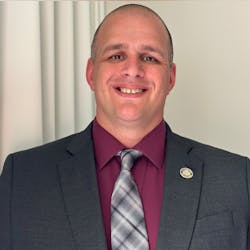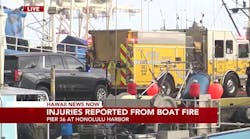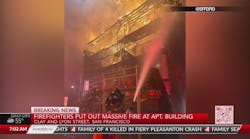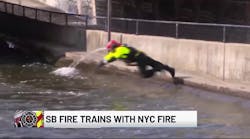Across America, volunteer fire departments face the challenges of reduced membership and resources. This prompts a common conversation: “What do we do when we need help?” Many times, the answer is, “We will call our neighboring agency.”
Calling your next-door agency for assistance through mutual aid and automatic aid isn’t as simple as it might seem to be. It’s more complicated than just saying, “Please help.” For mutual-aid and automatic-aid agreements to work, proper planning is required.
Building the relationship
An aid agreement begins with the building of a relationship. This is a relationship that starts prior to even agreeing to provide aid to each other.
A simple phone call to the chief of a neighboring agency to say that your department is available to help at any time usually is how the relationship begins. Ideally, the phone conversation between the two parties leads to a meeting, which possibly leads to agreements.
That said, don’t expect aid agreements to begin after the basic meet and greet. Relationships aren’t built overnight. Often, it takes planning meetings to shape the way that the agreement of services is provided.
After the initial relationship building, the relationship must be maintained. Continue the conversations on how each department can assist and benefit each other. Be concerned with the other department’s success. Its success is your success.
Make it a regular commitment to attend the other department’s fundraisers. Conduct joint training.
Legalities
No mutual-aid/automatic-aid agreement discussion can occur without a discussion of the legalities behind providing aid to another agency. Discussions should include:
- Do the departments have the legal authority to provide aid to another agency?
- What resources are to be provided?
- In what response zone will aid be provided?
- Who pays for the aid that’s provided?
Many departments require their aid agreements to be voted on by a board of directors or town/city council members. This procedural effort might require department lawyers to draft the aid agreement and to present it in the form of an ordinance.
Be sure that you check the local laws and regulations that govern your jurisdiction(s). Most states have a mutual-aid law that allows departments to request and provide mutual aid to other jurisdictions.
Planning and sharing of information
Aid agreements require planning and sharing of information. Leadership of both departments must work through how services will be provided. This takes the most time.
Planning must answer the following questions:
- Does each department’s equipment integrate with the other’s? (During an emergency incident isn’t when you want to find out that the thread pattern on each other’s hoses doesn’t match up.) Additional equipment or adapters might need to be purchased to allow for integrations to occur.
- What SOPs/SOGs will department members of each agency follow on the incident scene? It’s ideal to have common operating guidelines. This allows for the seamless integration of all agencies on an emergency incident.
- How will the departments communicate with each other during an incident? Does the responding agency move to the home agency’s channel? Do the radios have the same band of frequencies? Departments that have different radio frequency ranges, such as VHF and UHF, might require incident commanders to utilize two different radios for communication.
Once the planning portion is completed, the information must be shared among the departments. The information that must be shared includes:
- Preplans and key codes
- Key landmarks, such as landing zones
- Hydrant locations/draft sites
- Responding resources
Computer-aided-dispatch paging software on member smartphones can be used to share information. Many vendors allow a department to share its information with a mutual-aid agency. Responding members can see preplans, water supply options and how many members of the requesting agency are responding to the fire/incident.
Interdepartmental training
Aid agreements and interdepartmental plans are great, but both agencies must conduct joint training sessions. This does two things: It gets department members together in a nonemergency setting to build relationships, and it increases the efficiency of the services to be provided.
Joint training sessions must be planned and based on an objective that must be met. It’s vital that there’s integration of the departments, to allow members of different agencies to work together.
You must be sure to document trainings’ occurrence. This assists with the planning of future trainings and for legal purposes. One of those purposes is that the documented training and aid agreement assist with ISO credit during an evaluation. Undocumented training is just like the training never occurred.
Evaluation of aid agreements
Mutual-aid/automatic-aid agreements must be evaluated to ensure that the aid is needed and is provided in adequate fashion. Evaluations should be scheduled on a yearly basis. This process must happen between both aid parties, and a joint meeting must be conducted, so concerns can be addressed.
Some common evaluation topics include:
- Are response times of agencies adequate?
- Are responding resources adequate?
- Are incident outcomes to an acceptable standard?
- Are response SOPs/SOGs being followed, or do they need updating?
By the utilization of incident data and responder statements, leaders of departments can determine whether their mutual-aid/automatic-aid agreements require any adjustments.
Mutual benefit
Mutual-aid/automatic-aid agreements that exist between departments work to provide needed resources that aren’t always readily available. With proper planning and the building of relationships between departments, your mutual-aid/automatic-aid agreement will be a success for you and a neighboring department.
Justin Bailey will present “Prioritizing Your Department’s Training Program” and “The Rural Challenge: The First 10 Minutes” at Firehouse Expo. To register, visit firehouseexpo.com.






